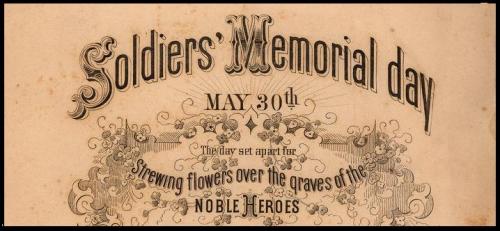Before 1972, when Memorial Day began being celebrated on the last Monday in May, Memorial Day was traditionally held on May 30. The holiday was established by the Grand Army of the Republic (GAR), an organization of Union veterans of the Civil War, in 1868 to commemorate and decorate the graves of deceased Union soldiers.
Major Gen. John A. Logan, chief of the GAR, led the effort to create Memorial Day. Following his military service, in which he was a member of Gen. William T. Sherman’s staff, Gen. Logan served as a U.S. Congressman and later a U.S. Senator from Illinois. Although he never lived in Colorado, Gen. Logan has many Colorado connections, mainly due to his investments in Colorado mines. Coloradans also revered him as a war hero, and many came to see him when he came to Denver with the GAR Encampment, an annual reunion of over 25,000 Union veterans. Logan County as well as Denver’s Logan Street and Fort Logan National Cemetery are named for him. A 12,870-foot peak, Mount Logan, also bears his name. You can read more about Gen. Logan and his Colorado connections in Robert Hartley’s article “General John A. Logan: A Name Remembered and Honored in Colorado,” in the Summer 2007 issue of Colorado Heritage magazine, which you can check out from our library.
Memorial Day, or Decoration Day as it was originally known, has grown to memorialize all of America’s fallen soldiers, not just those from the Civil War. An interesting look at how Memorial Day was celebrated a century ago can be found starting on page 105 of the State of Colorado’s 1913 Spring Holiday Book, issued by the Department of Public Instruction to help teachers plan lessons for the various holidays. The section on Memorial Day includes quotations, poems, essays, and songs that were originally used to teach youngsters about the holiday, but can now be used to teach us about an element of American life and culture over 100 years ago that we still celebrate today.
- How to Spot the Differences Between Eagles and Hawks - August 16, 2021
- How Transportation Projects Help Tell the Story of Colorado’s Past - August 9, 2021
- Time Machine Tuesday: The Night the Castlewood Canyon Dam Gave Way - August 3, 2021

